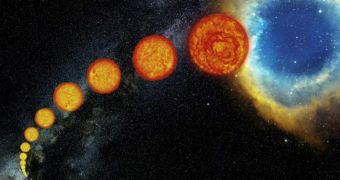When it comes to studying older Sun-like stars, astronomers suddenly find themselves in a bind. They say that their instruments start picking up unusual fluctuations in the stars' brightness. They add that, if they investigate the phenomenon even deeper, then more mystery is added to the original one, and very little is actually figured out. Over the years, the experts have put forth a number of scientific explanations for revealing the causes behind the brightness variations, but a new set of studies by the European Southern Observatory's (ESO) Very Large Telescope (VLT) has contradicted all of them.
The previous ideas were all devised to explain the fluctuations that appeared in the brightness of roughly 33 percent of all Sun-like stars that were approaching the end of their burning cycle. “We have obtained the most comprehensive set of observations to date for this class of Sun-like stars, and they clearly show that all the possible explanations for their unusual behavior just fail,” Mount Stromlo Observatory expert Christine Nicholls, who is an Australian member of the study team, explains. The scientist says that the mysterious behavior was observed both in the Milky Way and in other galaxies as well.
She explains that Sun-like stars in their latest years are called red giants, because they have expanded way beyond the reach they had as new stars. Nicholls says that the brightness variations were observed since the 1930s, and that they tend to occur very regularly, at time intervals of up to two years. After this stage in their burning cycle ends, the red giants cool even further and reduce the outer layers of their atmosphere until they turn into white dwarfs. The latter are unable to sustain nuclear fusion, and therefore burn their remaining helium supply for many years.
These “variations are thought to be caused by what we call 'stellar pulsations.' Roughly speaking, the giant star swells and shrinks, becoming brighter and dimmer in a regular pattern. However, one third of these stars show an unexplained additional periodic variation, on even longer timescales – up to five years,” the Australian expert says. She also reveals that the new VLT study looked at about 58 Sun-like stars, all of them located in the Large Magellanic Cloud, which is our closest galactic neighbor. The investigation lasted for two and a half years.
“The newly gathered data show that pulsations are an extremely unlikely explanation for the additional variation. Another possible mechanism for producing luminosity variations in a star is to have the star itself move in a binary system. However, our observations are strongly incompatible with this hypothesis too,” Australia National University expert Peter Wood, the leader of the new research group, says, quoted by Space.

 14 DAY TRIAL //
14 DAY TRIAL //